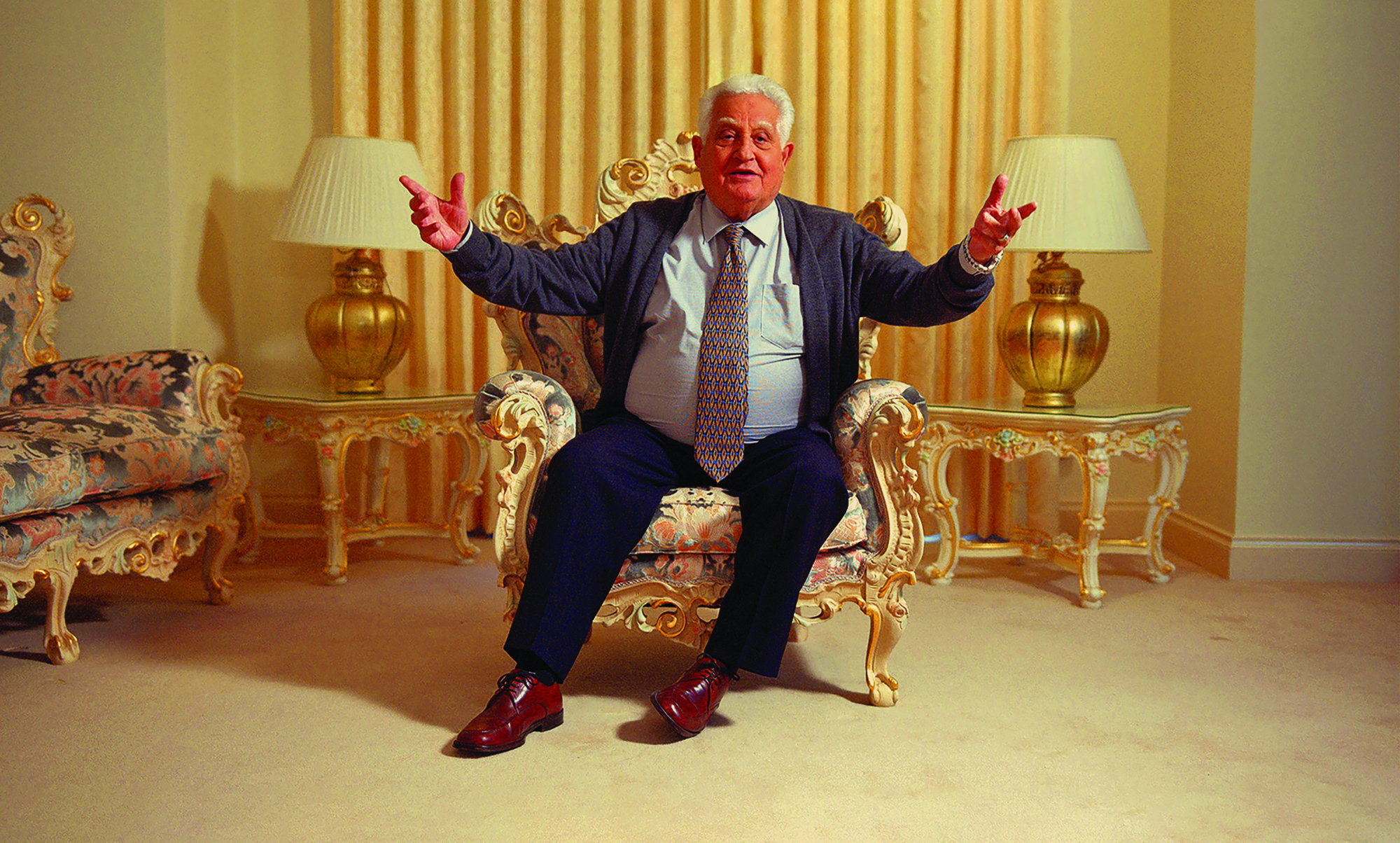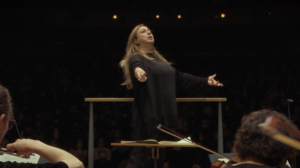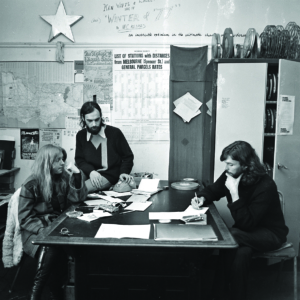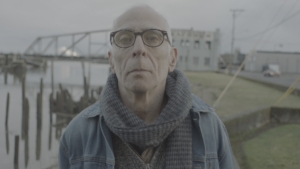Melbourne-based filmmaker Madeleine Martiniello grew up with stories detailing the rich history of Italian immigration to Australia. Seeking a new start during the 1950s, her nonna and nonno came to Melbourne by boat alongside thousands of their countryfolk, having left behind a Europe still overshadowed – physically and psychologically – by the unimaginable tragedy of World War II. They were part of a great fusing of cultures that would one day lead to the Victorian capital’s enduring obsession with coffee (after an initial period of sneering distrust).
So, too, was a young Franco Cozzo. The aspiring young artist, from a mountainous village overlooking Catania on the eastern edge of Sicily, arrived alone in Port Melbourne on 26 January 1956. Far from his beloved mother, and faced with anti-Italian sentiment and an expectation of assimilation – not to mention a scarcity of espresso – he was determined to make a new life for himself that would not involve rearing horses. Grafting hard in the door-to-door fridge and car sales businesses, he saved his pennies, eventually carving out a remarkable empire founded on selling ostentatiously baroque furniture.

Martiniello’s grandparents were no strangers to Cozzo’s exuberant television adverts, in which he gleefully espoused an unruly hybrid of English and Italian, rolled in with a dash of Greek for good measure: ‘Megalo, megalo, megalo […] Comprate da Franco Cozzo!’[1]See, for example, ‘Franco Cozzo TV Commercial Melbourne 1980s (Rebroadcast in 2014)’, YouTube, 21 February 2014, <https://www.youtube.com/watch?v=6aTO6Iv4f3A>, accessed 2 May 2022. But that wasn’t how her first documentary feature, Palazzo di Cozzo, which debuted during the online-only 2021 Melbourne International Film Festival (MIFF), came to be. ‘It was more than just his pop culture status that drew me in, as a storyteller,’ she says. While some of her grandparents’ friends owned lounges that resembled his stock in trade, Martiniello notes, ‘I don’t know if any of it was from Franco Cozzo – but I was quite aware of that aesthetic, and always really drawn to it.’ She only really became aware of his exaggerated presence as an adult, mainly via the wilds of YouTube. By this time, Cozzo’s empire might have all but faded into near-silent showrooms haunted by decades of overstock and few customers, but his catchcry had endured, immortalised in The Argotiers’ rock song ‘I Wanna Die in a Franco Cozzo Bed’ – as did his likeness, depicted in murals and footy banners alike.
A chance phone call caused Martiniello’s path to overlap with Cozzo’s. The Victorian College of the Arts documentary master’s graduate used to sit on the rooftop of a friend’s Sydney Road apartment opposite Cozzo’s Brunswick showroom and wonder aloud who shopped there. But it was the vast Footscray outpost that caught her eye one day. ‘I was just driving past, like I had 100 times before, and I actually thought – like a lot of people in Melbourne – that the shop was closed,’ she recalls. Thinking that the dusty bones would make a great location in which to shoot a documentary short, she googled the venue and called the number listed, hoping to ask for the family’s permission. Not knowing if it would still be connected, she was greatly surprised when Cozzo himself picked up. ‘As soon as I realised he was still there working six days a week in his eighties, I knew there was more of a human story there.’
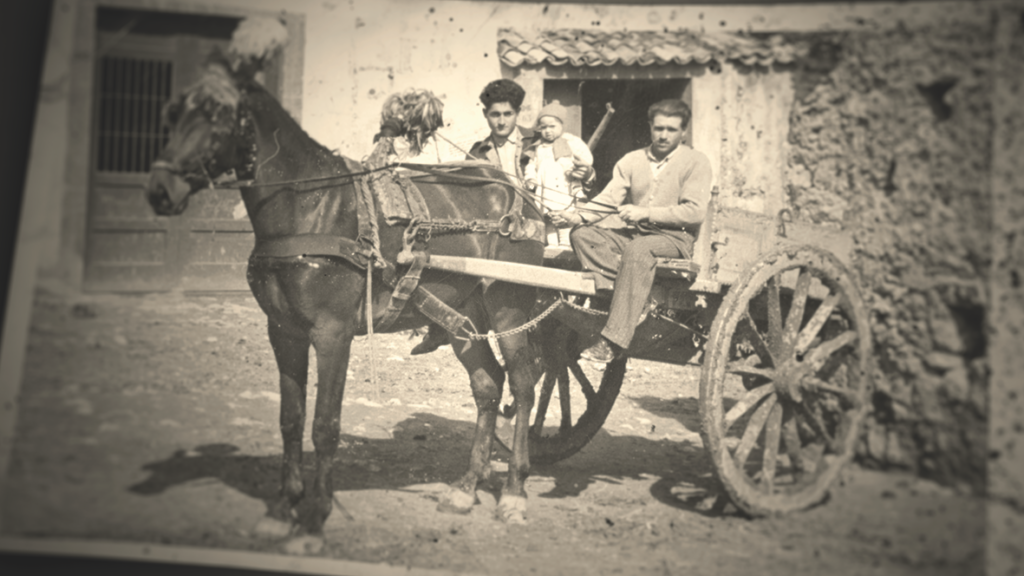
A man for all settees
Martiniello was not the first to offer to follow Cozzo with a camera and hopefully uncover a little more of the man beneath the myth, but she believes her family background was a door opener. ‘Because I’d grown up with Italian grandparents, I felt really comfortable around him early on, and I think he felt the same about me,’ she says, adding:
There are parallels between the flamboyance of Franco’s furniture and his personality. But his furniture is also of another era as well, as Franco himself is of another era. There’s a poetic link between them.
In this way, Martiniello views Palazzo di Cozzo as a time capsule of sorts, not unlike the now-sold Footscray showroom, which the founder still rents for now until it inevitably gives way to apartments. ‘It’s just sitting there on a very, very busy road, and both the traffic and the world [are] passing it by,’ she notes, adding that Cozzo and his building are almost symbolic of one another. ‘He’s still a towering presence, but with the world encroaching around him.’
‘His furniture is also of another era … as Franco himself is of another era. There’s a poetic link between them.’
– Madeleine Martiniello
The documentary allows us to see two sides of Cozzo, not unlike ancient busts of the dual-faced Roman god of beginnings and endings, Janus. ‘One is the vulnerable, more interior side, and then there’s the public, performative side, and I guess they both coexist,’ Martiniello says. In Palazzo di Cozzo, we witness the irrepressible showman at work, ordering new pieces for a long-term Italian customer whose gold-laced Toorak home seems like a temple to the glorious heyday of Cozzo’s vision. We also get to see him and his second wife, Assunta, welcome customers from the newer communities once again transforming the face of Footscray. ‘That was one of the big surprises for me, when I discovered that current-day migrants were his contemporary customers,’ Martiniello notes, pointing to her encounters with patrons from Chinese, Middle Eastern and African backgrounds. ‘Some of the customers I spoke to really appreciated him as an emblem of migrant success.’
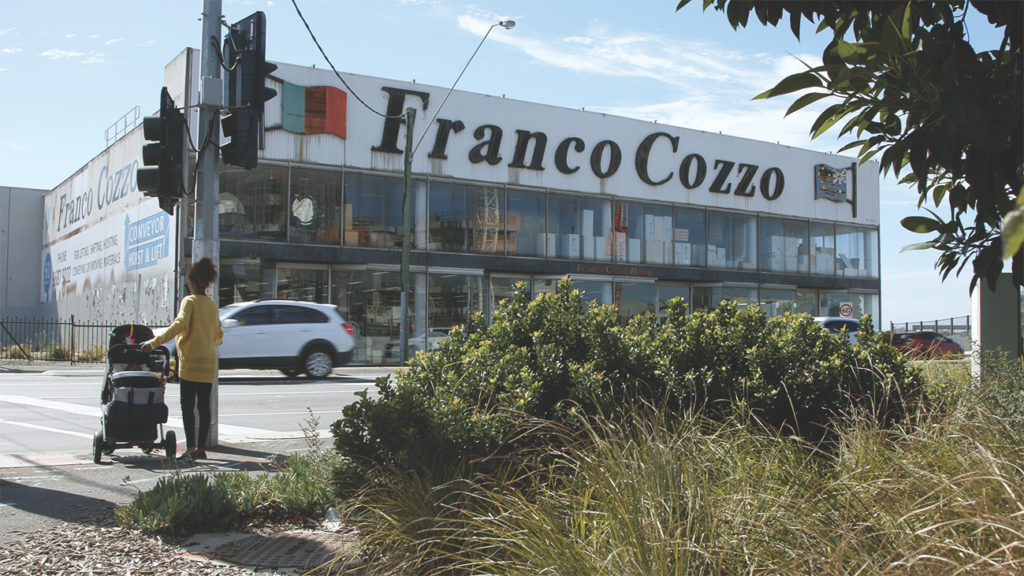
The documentary also reveals Cozzo’s quiet moments of self-doubt, particularly in scenes shot in the forlorn Footscray store’s attic, festooned with old stock. When Martiniello asks him why he bought so much – a rare interjection from behind cinematographer Vincent Lamberti’s camera – Cozzo responds, ‘Because there was a time when we sold a lot.’ The salesman sighs: ‘All my Italians are in the cemetery.’ There is also an unguarded moment of pain at even the briefest mention of his most unruly son, Luigi, whose imprisonment on drug charges brought disrepute to the family door[2]See ‘Father’s Affair Turned Son to Drugs: Lawyer’, The Canberra Times, 14 January 1992, p. 9, available at <https://trove.nla.gov.au/newspaper/article/118164115>, accessed 2 May 2022. along with hurtful whispers regarding the true nature of the family business.[3]‘[Cozzo] is resigned to dealing with the rumours […] regarding mafia connections (which he denies).’ David Nichols, ‘“No Other People Popular Like Franco Cozzo in Melbourne”: A New Film Explores His Colorful, Hard-sell Life’, The Conversation, 20 September 2021, <https://theconversation.com/no-other-people-popular-like-franco-cozzo-in-melbourne-a-new-film-explores-his-colorful-hard-sell-life-167352>, accessed 12 May 2022. Cozzo lives and breathes his life’s work, and his family is everything he stands for, so these cruel rumours hurt deeply. Martiniello felt privileged to share both sides of the coin with him.
He’s still vibrant and seizes the day, but he’s also aware of being in that final chapter of his life and reflecting on his legacy. And so I think there’s always some element of melancholy in that, no matter how large a life you’ve lived.
‘The human above the machine’
One of the most engaging voices in the documentary is historian Gerardo Papalia. Dubbing Cozzo a ‘migrant entrepreneur’, he provides a great deal of context as to what it would have been like for Italian families to settle into the Melbourne of the 1950s, where anyone who spoke a language other than English was treated warily. ‘He really got what I was trying to say with the film,’ Martiniello shares.
Papalia also uncovers a gold nugget that may or may not be familiar to those enamoured with Cozzo’s larger-than-life persona, as popularised by those zany television advertisements: he executive-produced the first non-English-language program to beam out of the small screen in Australia, predating the first television broadcast of multicultural station SBS by over a decade. Variety show Carosello popped up on Channel 0 in 1968, showcasing Italian-speaking performers in a popular Sunday afternoon slot sandwiched between wrestling matches and sword-and-sandal epics. ‘He wanted to sell his furniture and he loved music and wanted to be a performer, and he put those two kinds of interests together,’ Martiniello says.
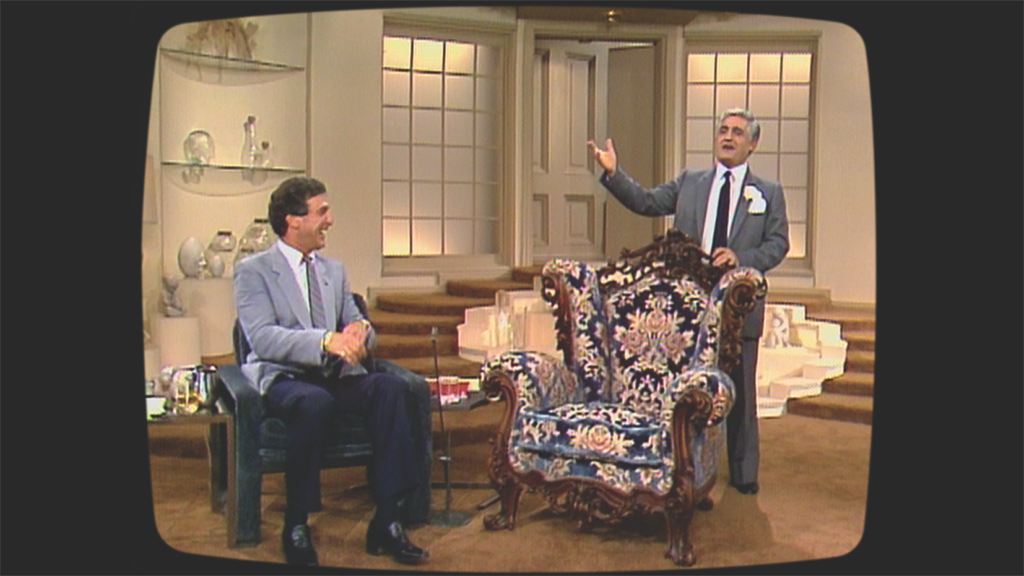
Papalia also offers one possible reason for why Cozzo’s seemingly already old-fashioned wares were deemed so chic by a particular set, and notes that the baroque style continues to be championed by fashion houses like Versace and Dolce & Gabbana:
It takes craftsmanship. It’s artisanal. It takes a lot of skill. There aren’t straight lines, so it’s quite sensual. Textiles are very rich or embroidered […] Certainly, if you liked the human, and you put the human above the machine, you’re going to want the baroque, because the baroque has human hands all over it.
In the documentary’s most touching moment, grieving siblings mourn the deaths of their working-class Italian migrant parents while preparing to sell some of the Cozzo furniture that the latter proudly scrimped and saved for. Martiniello discovered them by searching for ‘Cozzo’ on digital marketplace Gumtree. ‘I was basically hoping for a scene like that, and I can’t believe how lucky I got,’ she says of the beautiful interaction. In a very different part of town, the Toorak customer reached out to Martiniello when she heard about the filming of Palazzo di Cozzo through the grapevine.‘I was pretty gobsmacked when I got there,’ the director says, adding that she found another uberfan – who shares a glorious aside about co-workers warning her about what owning a Cozzo bed would do to her sex life – via Twitter. ‘Those scenes are probably my favourites in the film,’ Martiniello offers. ‘Like I said, I always wanted to answer the question “Who buys that furniture?” in the film.’
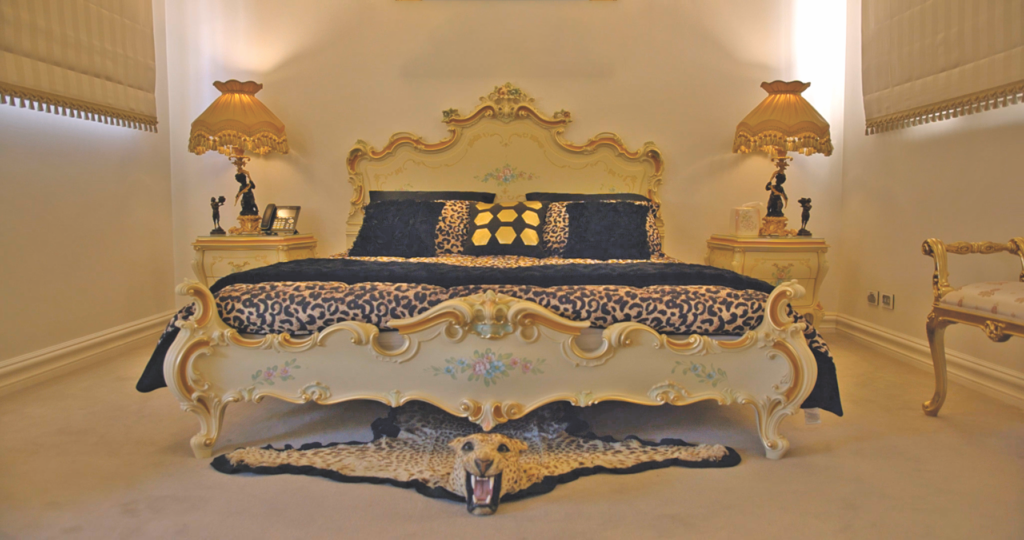
These interactions convey the sense that, even today, some Italian-Australians ‘assimilate’ on the streets but maintain pride in the craftsmanship on show in their homes. There are hints of classism at play here, and the long shadow of bigotry. ‘Lots of people have this prejudice towards the style, and they almost don’t even believe that there are any customers,’ Martiniello says. The director notes that some of the more broadly popular styles of the era, such as mid-century pieces, may have been within their skill sets. ‘Italian migrants might look at Scandinavian furniture and think, “I could make that,” because they came from a background where they did have to make things themselves,’ she says. In this way, investing in a sideboard or a chaise longue from Franco Cozzo was buying into something truly special: the many hands of humans over the machine.
Changing faces
Palazzo di Cozzo was supposed to debut in front of a live audience at Melbourne’s Comedy Theatre, with the great man himself in attendance, but pandemic-related safety measures meant MIFF had to pivot to streaming. ‘It was quite an uncanny premiere,’ Martiniello chuckles. ‘But, in a way, it was really nice, because it’s such a Melbourne film, and I felt like there was hometown solidarity in watching it together in lockdown.’
These interactions convey the sense that, even today, some Italian-Australians ‘assimilate’ on the streets but maintain pride in the craftsmanship on show in their homes.
Also uncanny was the fact that, within days of locking the final cut on the feature-length version of the film, Martiniello had to chop another half-an-hour or so out of it for the version broadcast by production partner the ABC. ‘It was pretty torturous,’ she says of the quick turnaround. ‘It was so weird, because we literally finished on Friday and then I had to come back on Monday and start chopping bits out.’ Even as she made further edits, new links presented themselves. ‘You’re like, “What if I had done that in the other film?”’
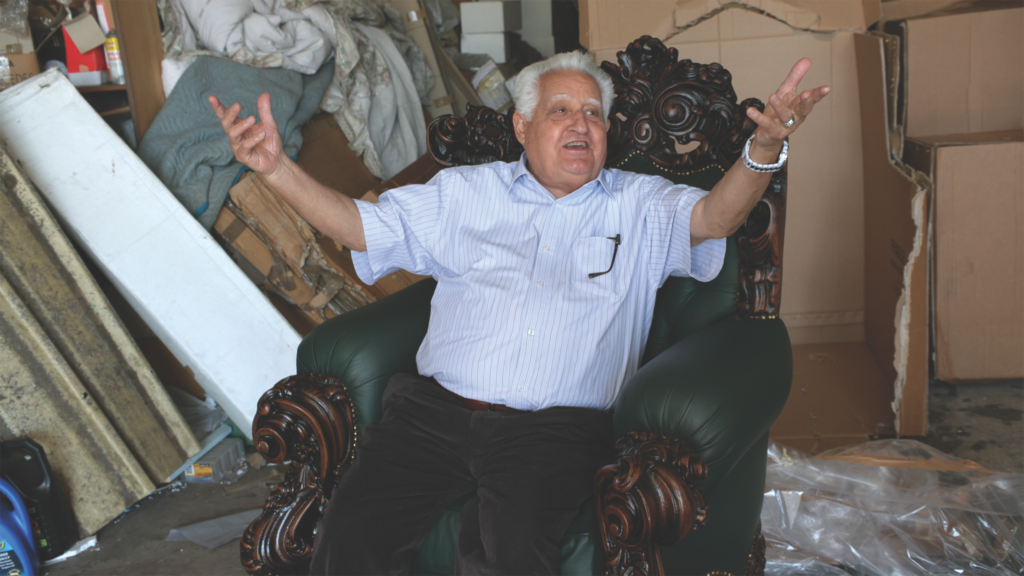
The benefit for viewers, of course, is that they can watch both versions and gain a slightly different perspective. ‘We made the focus more about the migrant experience,’ Martiniello says of the ABC cut. ‘There’s a voiceover I did to help condense it, so they definitely have a different flavour.’ Martiniello also became a first-time mother two weeks after completing the film, and bub has since been introduced to Cozzo. ‘I’m pretty sure we will always stay in touch,’ she says of the bond the pair built up in those cluttered backrooms in Footscray.
Going straight into motherhood after finishing a film was quite nice. I wouldn’t say it was a break, exactly, but it was great to be in this completely different headspace after the extreme focus on the film. But I guess now I’m coming out of that and heading into the space where I’m learning to have my filmmaking life and my parenting life coexist, and I’m actually excited about that.
Perhaps Janus will smile on Martiniello, just as he has on Cozzo.
Endnotes
| 1 | See, for example, ‘Franco Cozzo TV Commercial Melbourne 1980s (Rebroadcast in 2014)’, YouTube, 21 February 2014, <https://www.youtube.com/watch?v=6aTO6Iv4f3A>, accessed 2 May 2022. |
|---|---|
| 2 | See ‘Father’s Affair Turned Son to Drugs: Lawyer’, The Canberra Times, 14 January 1992, p. 9, available at <https://trove.nla.gov.au/newspaper/article/118164115>, accessed 2 May 2022. |
| 3 | ‘[Cozzo] is resigned to dealing with the rumours […] regarding mafia connections (which he denies).’ David Nichols, ‘“No Other People Popular Like Franco Cozzo in Melbourne”: A New Film Explores His Colorful, Hard-sell Life’, The Conversation, 20 September 2021, <https://theconversation.com/no-other-people-popular-like-franco-cozzo-in-melbourne-a-new-film-explores-his-colorful-hard-sell-life-167352>, accessed 12 May 2022. |
